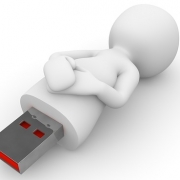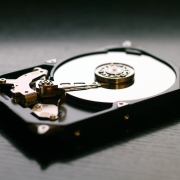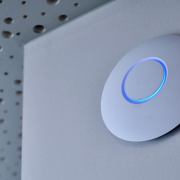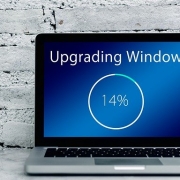Reboot vs. Reset: What’s the Difference?
By Marco Horn / Tim Fisher
How reboot and reset differ and why it matters
What does it mean to reboot? Is rebooting the same as restarting? What about resetting a computer, router, phone, etc.? It might seem silly to distinguish them from each other but among these three terms are actually two entirely separate meanings!
The reason it’s important to know the difference between restart and reset is because they do two very different things, despite sounding like the same word. One is much more destructive and permanent than the other, and there are plenty of scenarios where you need to know which action to perform in order to complete a certain task.
All of this might sound cryptic and confusing, especially when you throw in variations like soft reset and hard reset, but keep reading to learn what’s really meant by these terms so that you’ll know exactly what’s being asked of you when one of these terms shows up in a troubleshooting guide or someone in Tech Support asks you to do one or the other.
Restart Means to Turn Something Off
Reboot, restart, power cycle, and soft reset all mean the same thing. If you’re told to “reboot your computer,” “restart your phone,” “power cycle your router,” or “soft reset your laptop,” you’re being told to shut the device off so that it’s no longer getting power from the wall or battery, and then to turn it back on.
Rebooting something is a common task that you can do on all sorts of devices if they’re not acting like you expect. You can restart a router, modem, laptop, tablet, smart device, phone, desktop computer, etc.
In more technical words, to reboot or restart something means to cycle the power state. When you turn the device off, it’s not receiving power. When it’s turned back on, it is getting power. A restart/reboot is a single step that involves both shutting down and then powering on something.
When most devices (like computers) are powered down, any and all software programs are also shut down in the process. This includes anything loaded into memory, like any videos you’re playing, websites you have open, documents you’re editing, etc. Once the device is powered back on, those apps and files have to be reopened.
However, even though the running software is shut down along with the power, neither the software nor the programs you had opened are deleted. The applications are simply shut down when the power is lost. Once the power is returned, you can then open those same software programs, games, files, etc.
Putting a computer into hibernation mode and then shutting it completely down is not the same as a normal shutdown. This is because the memory contents are not flushed out but instead written to the hard drive and then restored the next time you start it back up.
Yanking a power cord from the wall, removing a battery, and using software buttons are a few ways you can restart a device, but they’re not necessarily good ways to do it. Learn how to restart anything with specific instructions on rebooting everything from your computer and phone to your router and printer.
Reset Means to Erase and Restore
Understanding what “reset” means can be confusing in light of words like “reboot,” “restart,” and “soft reset” because they’re sometimes used interchangeably even though they have two completely different meanings.
The easiest way to put it is this: resetting is the same as erasing. To reset a device is to put it back in the same state it was in when it was first purchased, often called a restore or factory reset (also a hard reset or master reset). It’s literally a wipe-and-reinstall of a system since the only way for a true reset to take place is for the current software to be completely removed.
Say for example that you’ve forgotten the password to your router. If you were to simply reboot the router, you’d be in the identical situation when it powers back on: you don’t know the password and there’s no way to login.
However, if you were to reset the router, the original software that it was shipped with will replace the software that was running on it just prior to the reset. This means that any customizations you made since you purchased it, like creating a new password (which you forgot) or Wi-Fi network, will be removed as the new (original) software takes over. Assuming you did actually do this, the original router password would be restored and you’d be able to log in with the router’s default password.
Because it’s so destructive, a reset isn’t something you want to do to your computer or other device unless you really need to. For example, you can reset your PC to reinstall Windows from scratch or reset your iPhone to erase all of your settings and apps.
Remember that all of these terms refer to the same act of erasing the software: reset, hard reset, factory reset, master reset, and restore.
Here’s Why Knowing the Difference Matters
We talked about this above, but it’s important to understand the consequences of confusing these two common terms:
For example, if you’re told to “reset the computer after you install the program,” what you’re technically being instructed to do is erase all the software on the computer simply because you installed a new program! This is obviously a mistake and the more correct ask should have been to restart the computer after the installation.
Similarly, simply restarting your smartphone before you sell it to someone certainly isn’t the best decision. Rebooting the device will just turn it off and on, and won’t actually reset/restore the software like you really want, which in this case would erase all your custom apps and delete any lingering personal information.
If you’re still having a hard time grasping how to remember the differences, consider this: restart is to redo a start-up and reset is to set up a new system.
.
 IT Experts are specialists in this field.
IT Experts are specialists in this field.
Contact us for any assistance that you need.
In a matter of minutes we can remotely log into your computer – safely and securely – to assist you with any issues you might experience.
What is remote support? Click here to find out.



 Emile Greyling
Emile Greyling 







